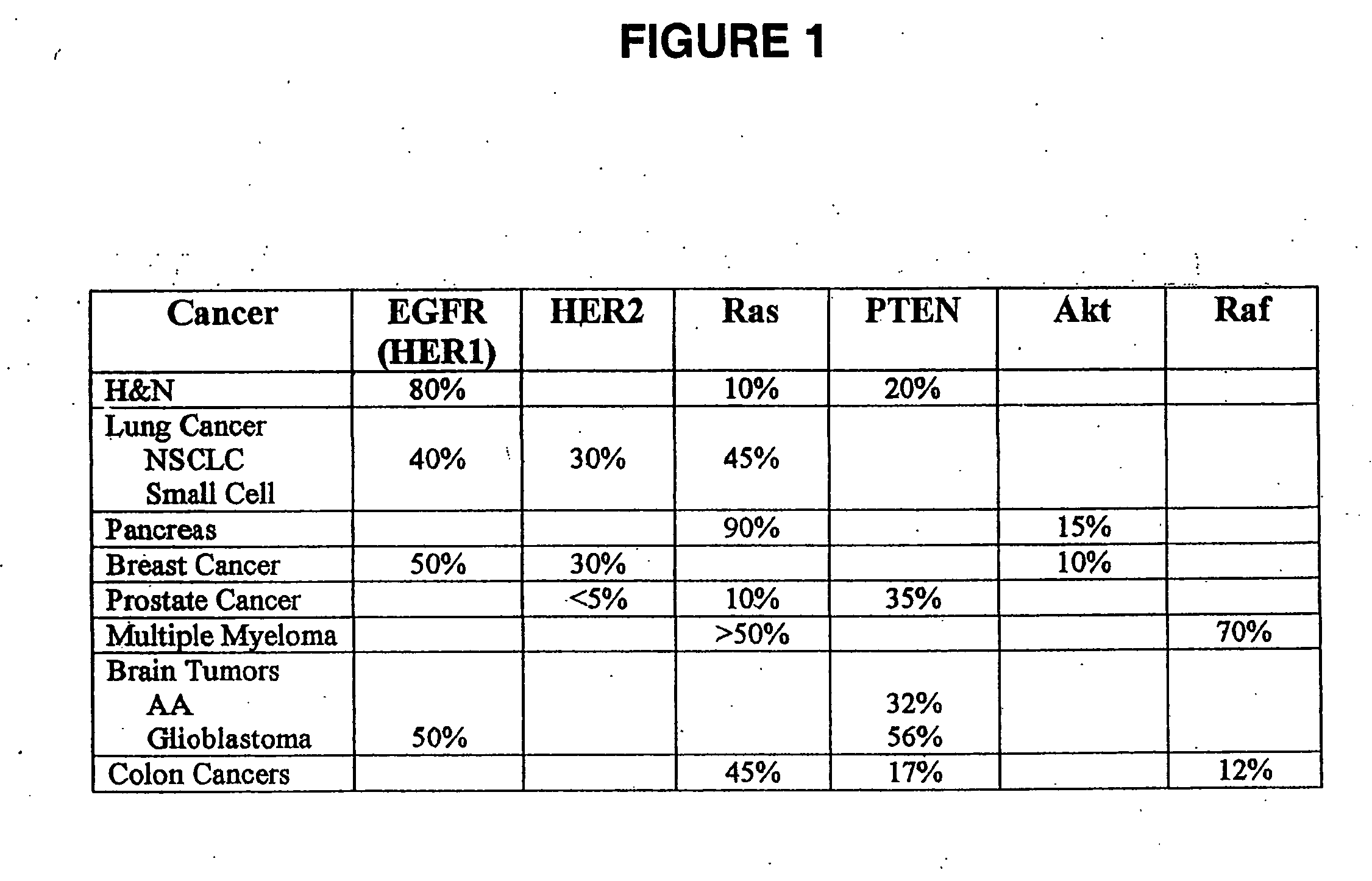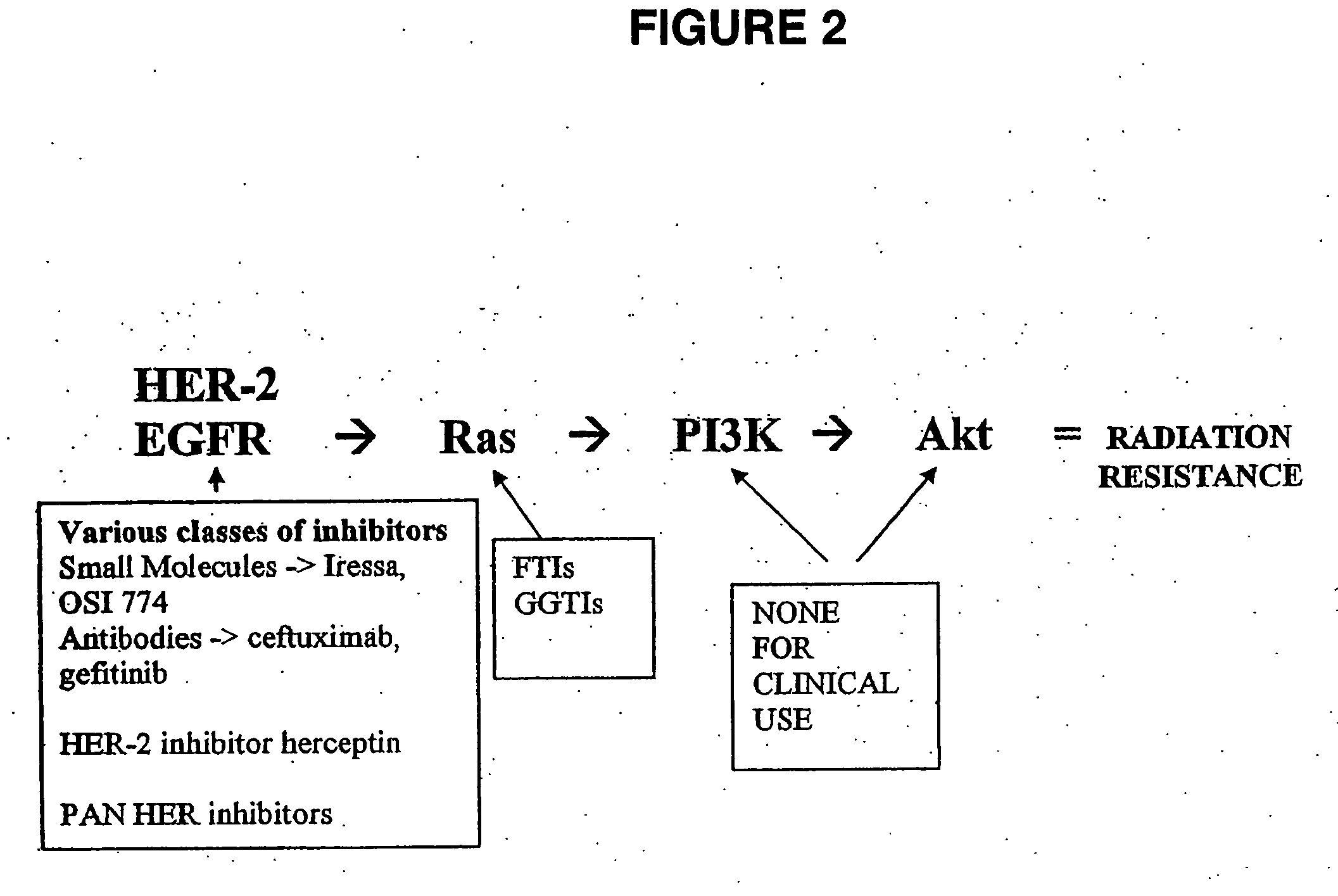Use of amprenavir as a radiation sensitizer
- Summary
- Abstract
- Description
- Claims
- Application Information
AI Technical Summary
Benefits of technology
Problems solved by technology
Method used
Image
Examples
experimental examples
[0093] The invention is further described in detail by reference to the following experimental examples. These examples are provided for purposes of illustration only, and are not intended to be limiting unless otherwise specified. Thus, the invention should in no way be construed as being limited to the following examples, but rather, should be construed to encompass any and all variations which become evident as a result of the teaching provided herein.
experimental example 1
Phosphorylation of Akt in the Presence of Amprenavir
[0094] Akt is a serine / threonine kinase that is phosphorylated at two sites, Thr 308 (kinase domain) and Ser 473 (C-terminal regulatory region). Using Western blot analysis, a human head-and-neck cancer cell line, SQ20B, (American Type Culture Collection; Manassas, Va.) containing a constitutively-active EGFR receptor and thus, increased signaling through PI3K, was examined for Akt phosphorylation.
[0095] Cells were lysed without trypsinization by rinsing culture dishes once with PBS followed by lysis with reducing Laemeli sample buffer. Samples were boiled, sheared, and clarified by centrifugation and stored at −20° C. Samples containing equal amounts of protein were separated on a 12% SDS polyacrylamide gel and blotted onto nitrocellulose membranes. Membranes were blocked in PBS containing 0.1% Tween-20 and 5% powdered milk before primary antibody addition. The dilution of the primary antibody was 1:2000. Antibody binding was de...
experimental example 2
Amprenavir-Mediated Radiation Sensitization of Cells
[0099] Amprenavir is typically recommended for use at a dose of about 1200 mg bid, and is found to have a peak plasma concentration of 15.1 μM and a trough plasma concentration of 0.63 μM. Clonogenic assays in SQ20B cells demonstrated radiosensitization of cells after treatment of the cells with 5 μM Amprenavir. The “surviving fraction” (SF) of cells after a radiation exposure of 2 Gray (Gy) Units (ie., “SF2”) subsequently decreased from 70% to 51% after treatment with Amprenavir+2 Gy radiation (FIG. 6). These results are clinically significant, since patients treated with radiation generally receive 30+treatments of a 2 Gy dose of radiation, and the difference is thus exponentially driven.
[0100] For example, with a surviving fraction after 2 Gy of radiation (“SF2”) (calculated as “plating efficiency,” the number of colonies counted after a 2 Gy dose of radiation, divided by the number of cells plated), of 0.7 and 30 fractions of...
PUM
| Property | Measurement | Unit |
|---|---|---|
| Fraction | aaaaa | aaaaa |
| Fraction | aaaaa | aaaaa |
| Fraction | aaaaa | aaaaa |
Abstract
Description
Claims
Application Information
 Login to View More
Login to View More - R&D
- Intellectual Property
- Life Sciences
- Materials
- Tech Scout
- Unparalleled Data Quality
- Higher Quality Content
- 60% Fewer Hallucinations
Browse by: Latest US Patents, China's latest patents, Technical Efficacy Thesaurus, Application Domain, Technology Topic, Popular Technical Reports.
© 2025 PatSnap. All rights reserved.Legal|Privacy policy|Modern Slavery Act Transparency Statement|Sitemap|About US| Contact US: help@patsnap.com



